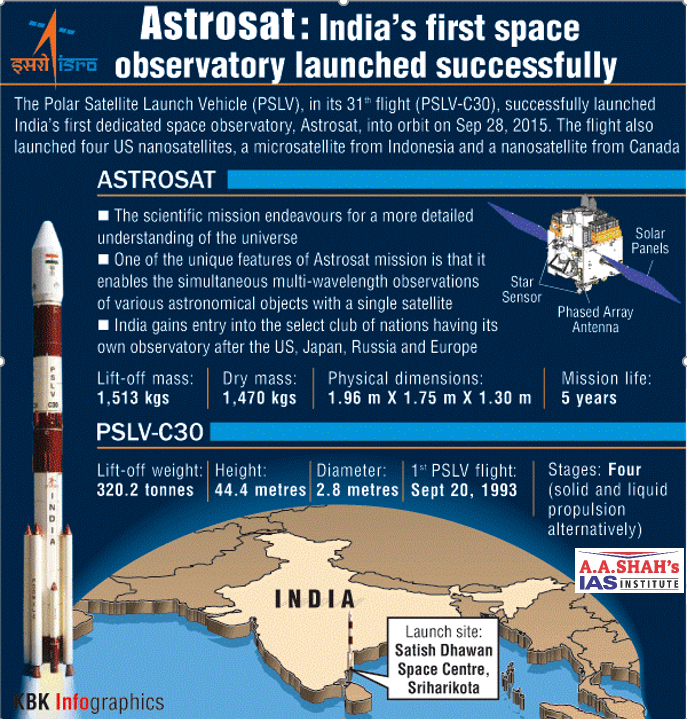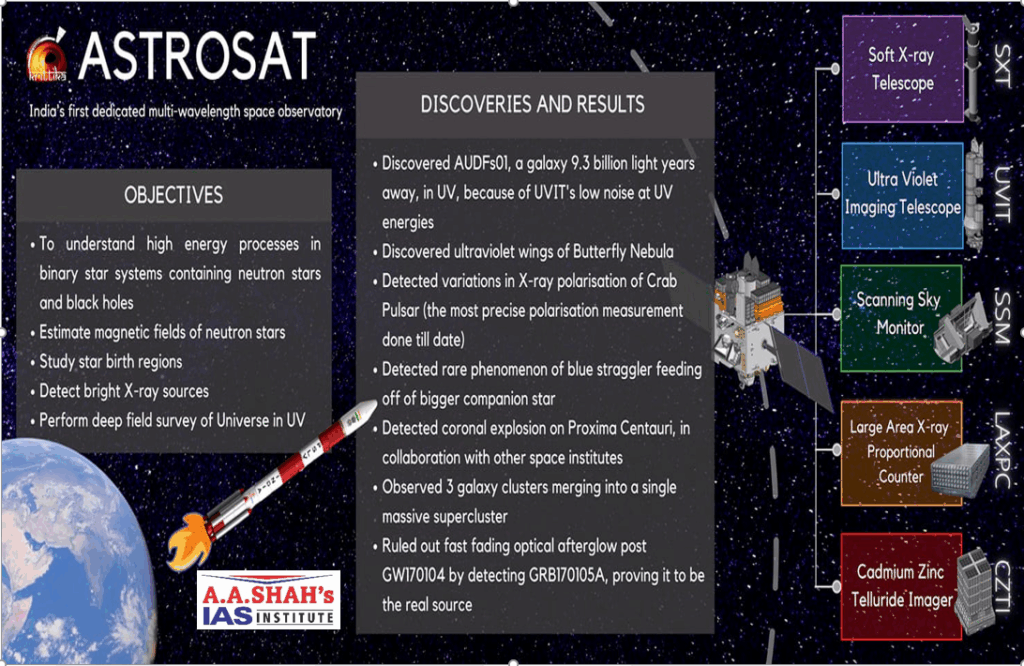Astrosat, India’s first space observatory, completes a decade
S&T – SPACE
29 SEPTEMBER 2025
- India’s first dedicated space astronomy observatory, AstroSat, completed a decade of operations.
- Ten years ago, on September 28, 2015, the PSLV-C30 (XL) rocket carrying AstroSat lifted off from the Satish Dhawan Space Centre in Sriharikota.
- Though the designed mission life of AstroSat was five years, it continues to provide valuable data.
- AstroSat was designed to observe the universe in the visible, ultraviolet, low and high energy X-ray regions of the electromagnetic spectrum simultaneously with the help of its five payloads.
- The five payloads are the Ultra Violet Imaging Telescope (UVIT), Large Area X-ray Proportional Counter (LAXPC), Cadmium–Zinc–Telluride Imager (CZTI), Soft X-ray Telescope (SXT), and the Scanning Sky Monitor (SSM).
- It made major interesting discoveries.
- From black holes to neutron stars, from the nearest star Proxima Centauri to first time detection of FUV photons from galaxies 9.3 billion light years away, AstroSat enabled groundbreaking insights across the electromagnetic spectrum from UV/Visible to high energy X-rays.
- Astrosat was realised by the ISRO with the participation of all major astronomy institutions, including the Inter University Centre for Astronomy and Astrophysics, Tata Institute of Fundamental Research, Indian Institute of Astrophysics, and the Raman Research Institute (RRI), some universities of India and two institutions from Canada and the U.K.

